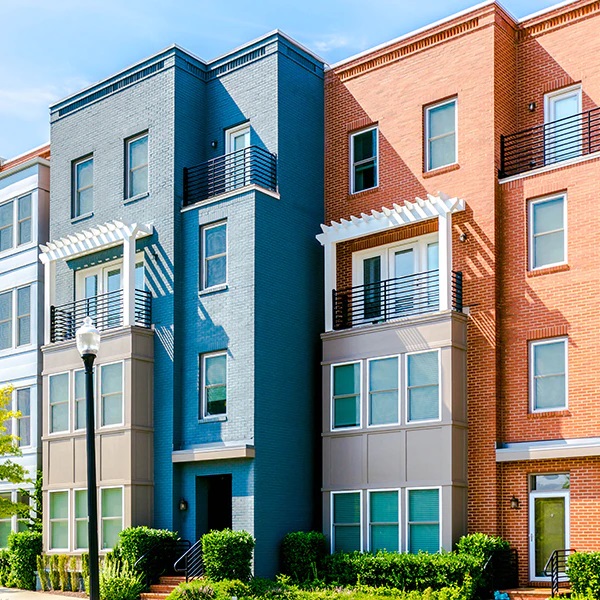Multifamily investors and developers navigate a supply-constrained marketplace

The COVID-19 pandemic has reshaped the multifamily housing market from the development stage through property operations. With greater population mobility due to remote work came heightened demand for rental housing in new markets. While capital for multifamily development flowed freely in 2021, multifamily developers faced rising construction costs due to supply chain and labor woes. In the early months of 2022, the question is: are these shifts cyclical, or will these migration, demand and pricing trends start to change direction?
At the 2022 National Multifamily Housing Council Apartment Strategies Conference, we heard first hand from industry experts about the current and future state of multifamily real estate. The following are highlights from our experience.
The impact of migration out of major markets
During the pandemic, a combination of remote work and the desire for more space led some apartment dwellers to move out of major cities such as San Francisco, Seattle, and New York to secondary and tertiary markets such as Boise, Spokane, Albuquerque, Austin and others. Experts agreed that some of this migration is permanent, but it’s too soon to tell how much.
San Jose, San Francisco and New York are starting to return to pre-COVID rents, but the big issue is whether more employers will start to require in-office work. In the current tight labor market, employees may have leverage to request permanent remote work and live where they want. Another question mark is the extent to which outflows of residents and businesses are tied to state laws and tax policies.
Supply chain and construction challenges impact project costs
Over the last year, developers were met with the concurrent challenges of supply disruption and labor shortages that, together, drove up the cost of constructing or renovating multifamily buildings and the time needed to complete projects. Leaders noted that the supply chain and labor availability is not yet normalized. Today’s discussion is not just about the price of raw materials, but how quickly they can be obtained and if they can be stored until they’re needed in construction.
Volatile supply pricing and sourcing increased the risk that needed to be priced into projects during underwriting. Despite the economics of expensive development, the robust demand for units and the rent increase still made the compelling case for value-add investments.
Looking ahead, we believe that rent increases can keep up with the rise on hard costs, and investors may pull back on value-add investment strategies. However, in a stabilized portfolio, owners may be able to push rents on the existing stock to help fund development.
The tech transformation of multifamily operations
Like many traditional industries, multifamily owners and operators were forced by the pandemic to rapidly shift how they managed their operations. With staffing issues and public health risks to consider, managers had to employ virtual tours and virtual leasing, as well as automate as many back-of-house functions as possible. This technological shift is structural and technological; however, not all consumers are ready to lease a unit without ever seeing it in person.
Capital chasing deals, but supply is still constrained
While capital is plentiful, the industry is still undersupplied with product. Deal volume is likely to continue to be robust ahead while banks want to lend, and rates are still attractive. The experts predict that some reversion in the amount of capital that’s moved into multifamily will happen as the office sector recovers.
Multifamily owners must be disciplined in their investment process and focus on ways to grow value through management; innovate the construction process to accelerate delivery; and address the labor shortages in both construction and operations.
As one of the nation's leading providers of commercial and multifamily real estate finance, the KeyBank Real Estate Capital team tracks the demand fundamentals in the multifamily marketplace in cities across the nation. To learn more, reach out to your mortgage banker or key.com/rec for additional information.
This document is designed to provide general information only and is not comprehensive nor is it tax or legal advice. If legal advice or other expert assistance is required, the service of a competent professional should be sought. KeyBank does not make any warranties regarding the results obtained from the use of this information. This may contain forward-looking statements, which involve risk and uncertainty. Actual results may differ significantly and speak only as of the date they are made or will be, and Key does not undertake any obligation to update the forward-looking statements to reflect the new information or future events. Key.com is a federally registered service mark of KeyCorp. All credit products are subject to collateral and/or credit approval, terms, conditions, availability and subject to change. ©2022 KeyCorp. All rights reserved. KeyBank is Member FDIC. Equal housing lender.